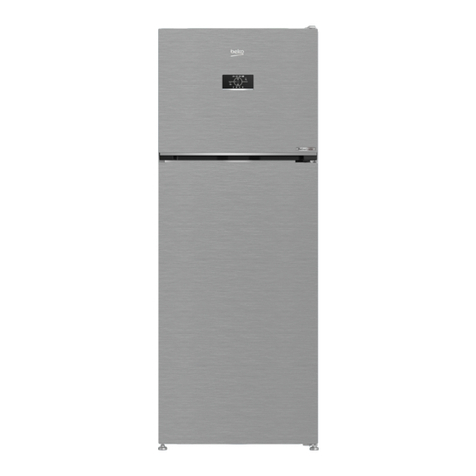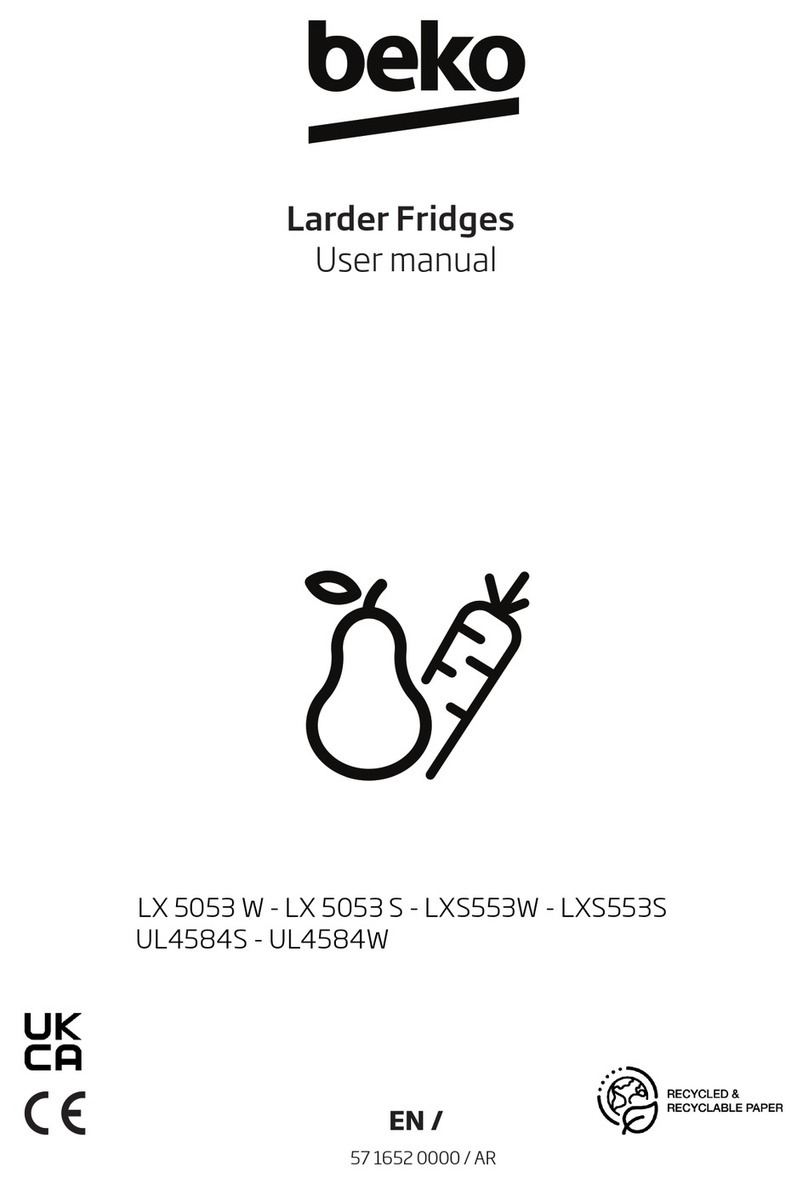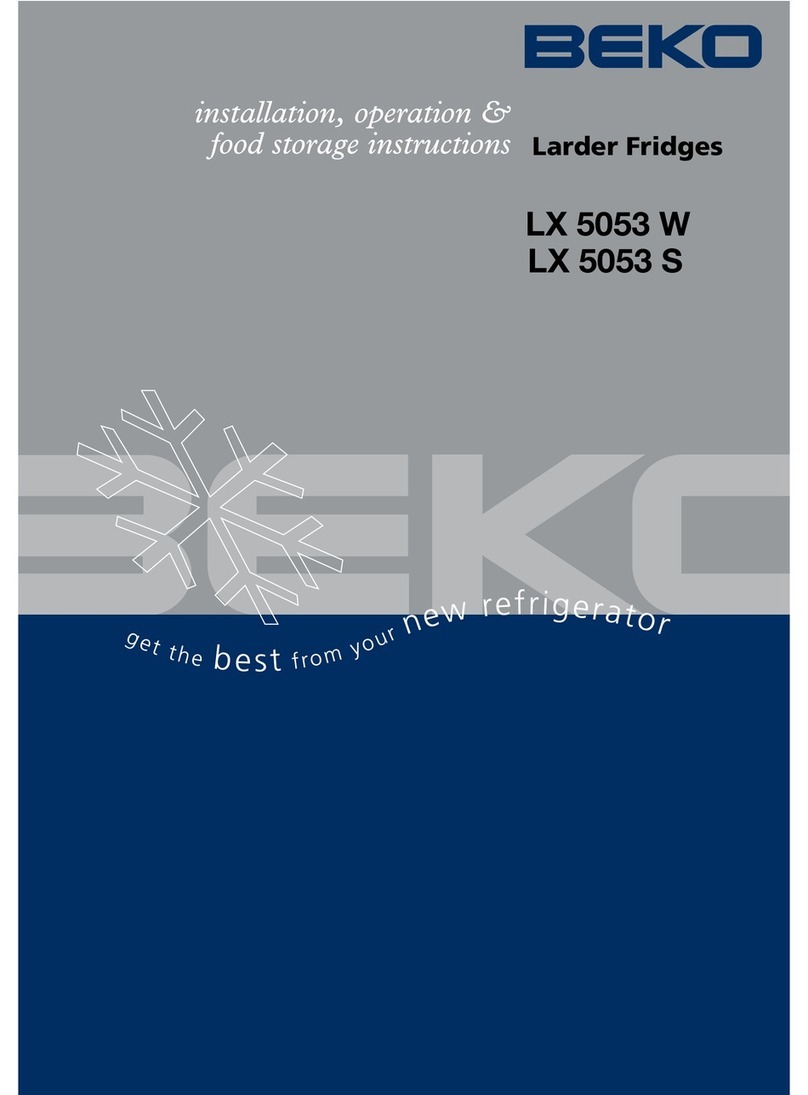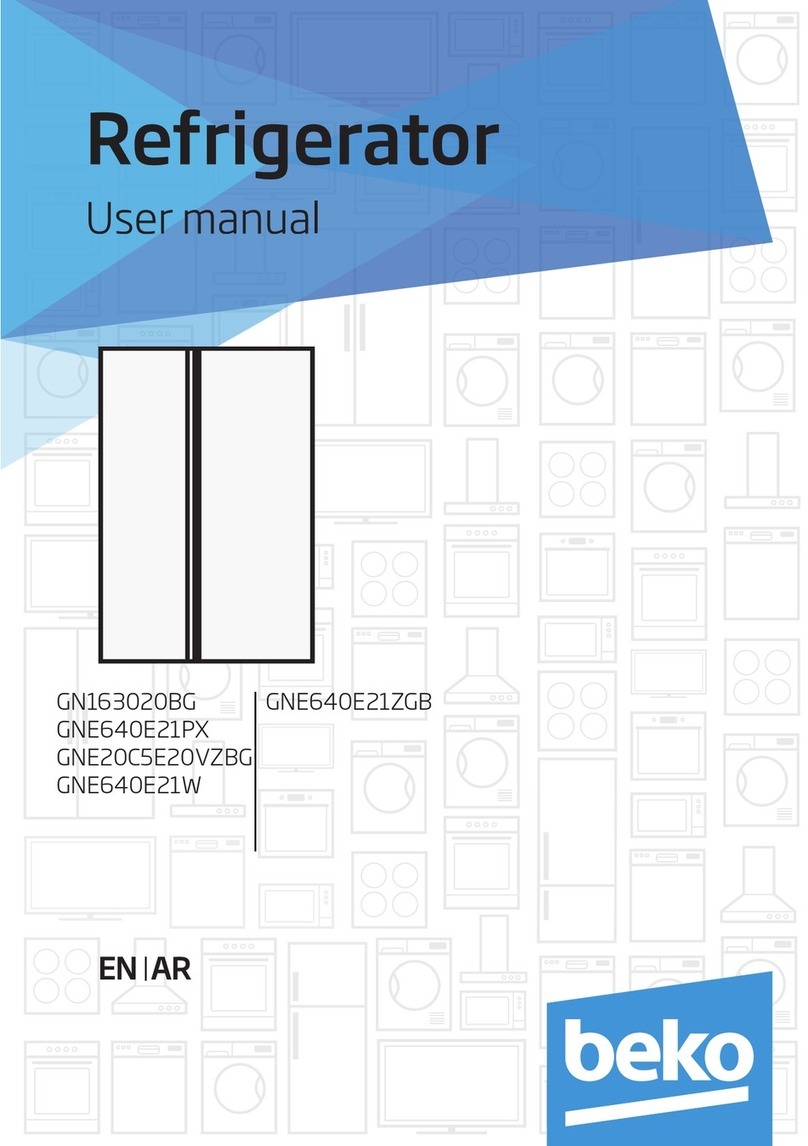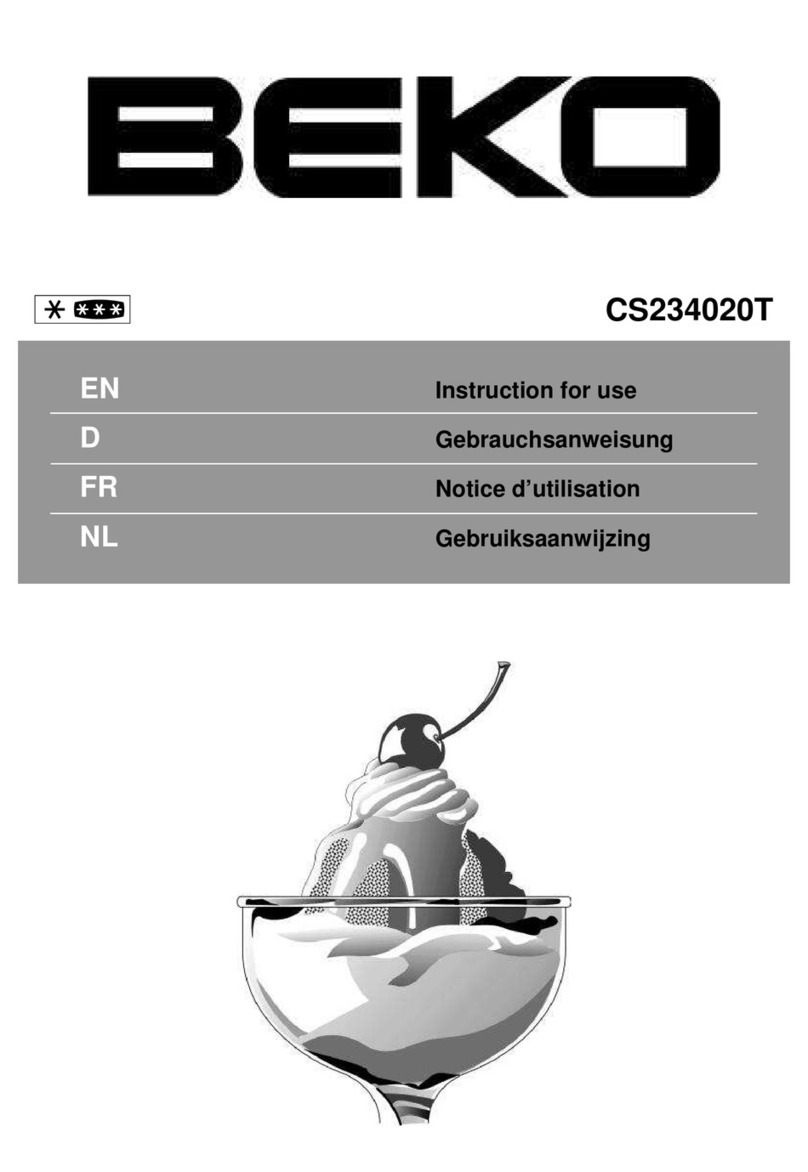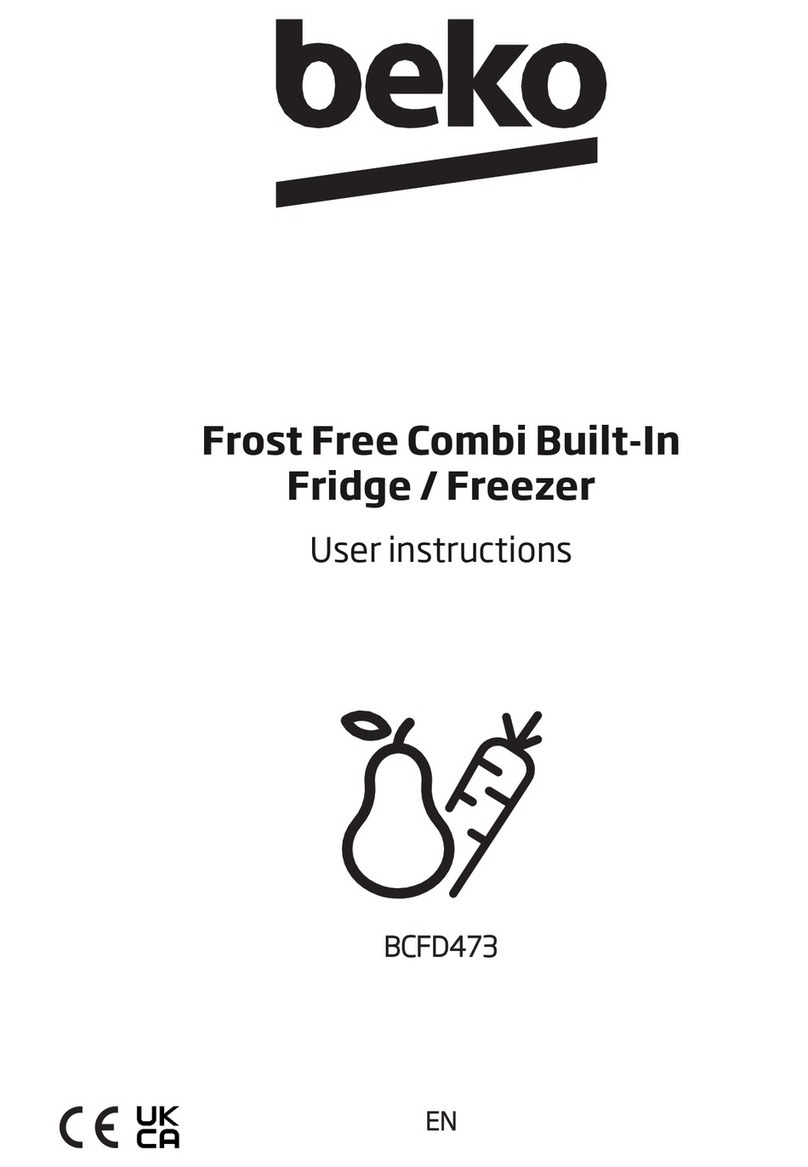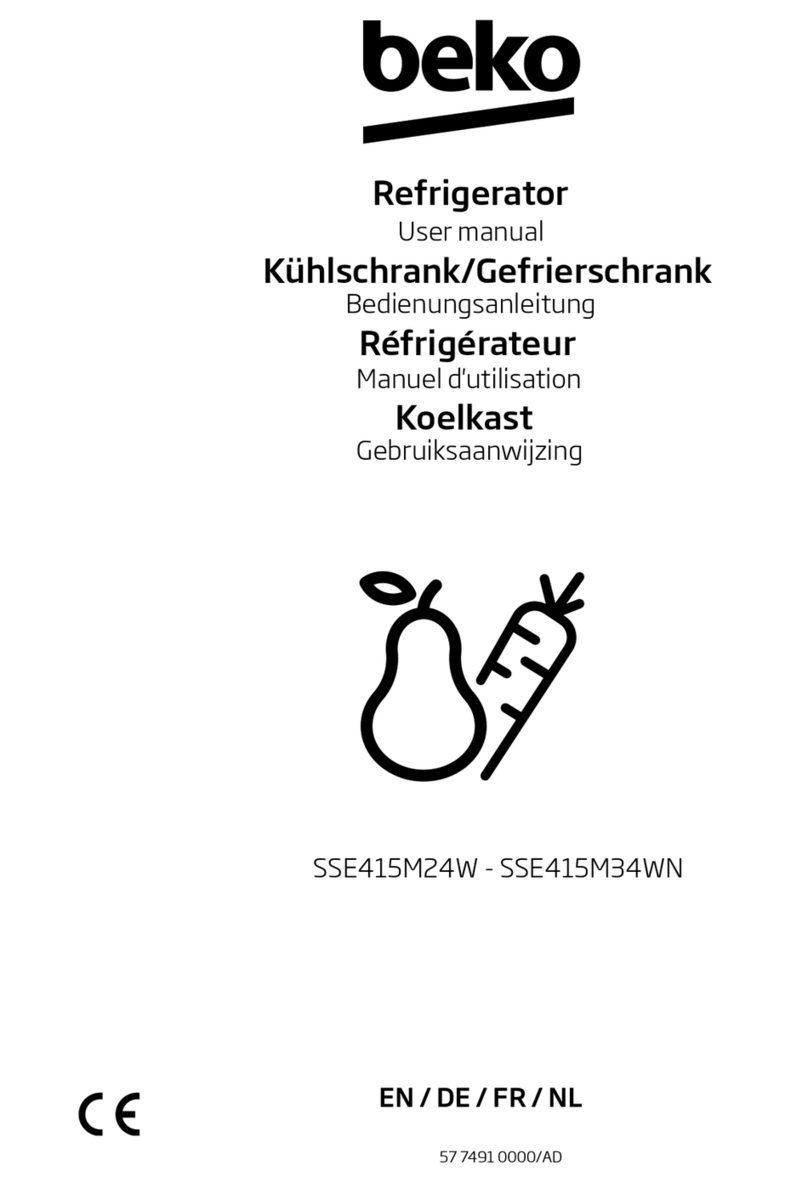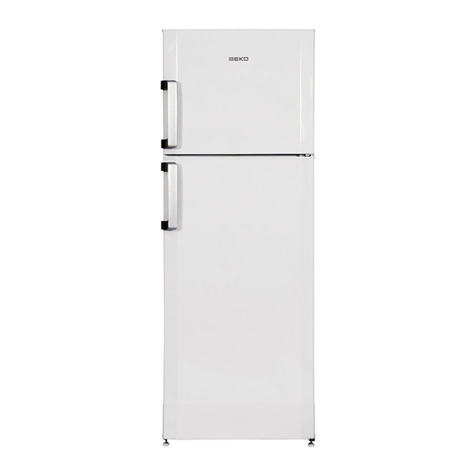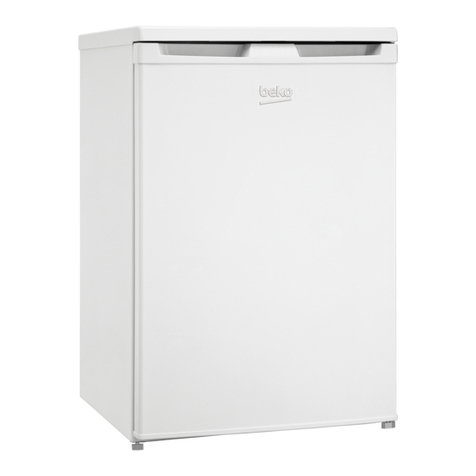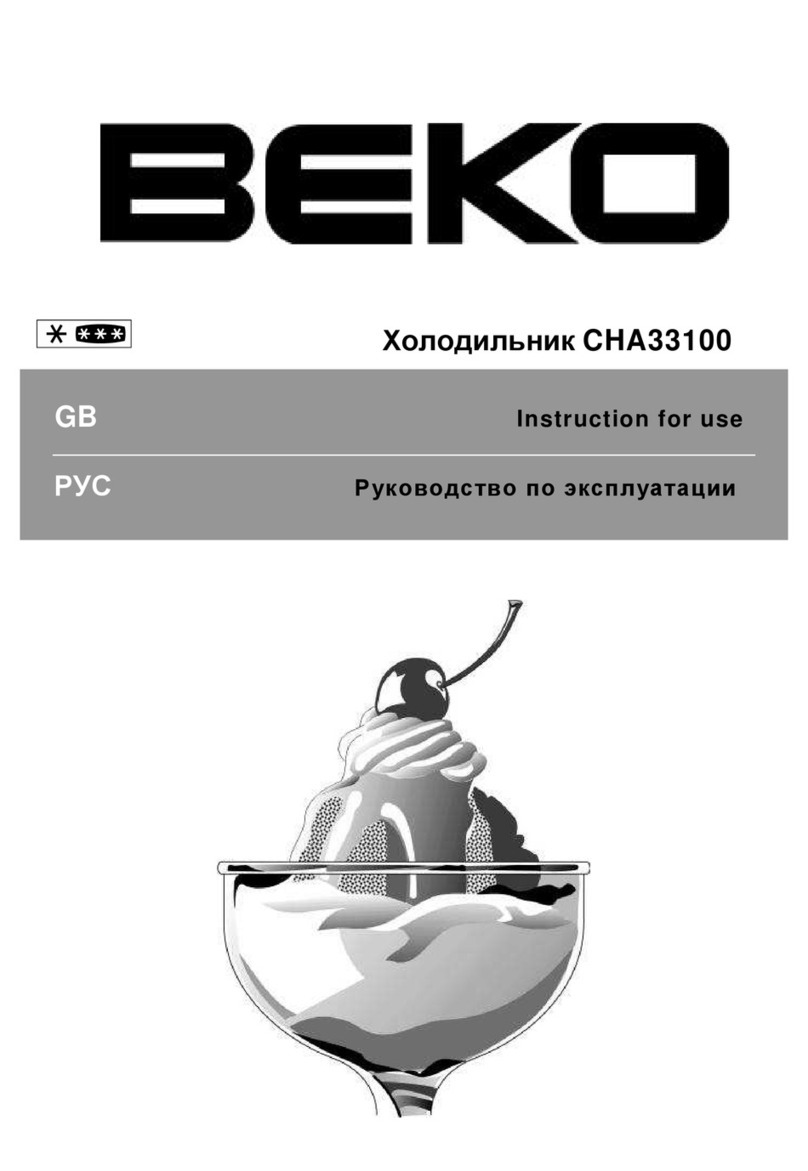2
Performance Model
CSA4706FF / CSA4706FFX
Energy efficiency class A
Energy consumption Kwh/year 340
Net storage volumes:
fresh food litres (cu.ft.) 162 (5.7)
frozen food litres (cu.ft.) 96 (3.4)
Total litres (cu.ft.) 258 (9.1)
Frozen food compartment rating 4 star
Conservation time from failure 11 hours
Freezing capacity kg (lbs) 6 (13)
Climate class SN
Operating noise level dB(A) 43
Operating temperature range +2 to +32 degrees C
Because we continually strive to improve our products, we may
change our specifications and designs without prior notice.
Important
Do not connect your appliance to the electricity supply until all packing
and transit protectors have been removed.
Leave to stand for at least 4 hours before switching on to allow the system
to settle if transported horizontally.
This appliance must only be used for its intended purpose, ie the storing
and freezing of edible foodstuff.
We do not recommend use of this appliance in an unheated, cold room
e.g. garage, conservatory, annex, shed, out-house, etc., see ‘Location’.
To obtain the best possible performance and trouble free operation from
your appliance, it is very important to carefully read these instructions.
On delivery, check to make sure that the product is not damaged and that
all the parts and accessories are in perfect condition.
We do not recommend the use of extension leads and multi-way adapters.
Failure to observe these instructions may invalidate your right to free service
during the guarantee period. BEKO plc declines to accept any liability should
the instructions not be followed.
Do not dispose of the appliance on a fire. At BEKO, the care and protection
of our environment is an ongoing commitment. This appliance which is
among the latest range introduced is particularly environmentally. Your
appliance contains non CFC / HFC natural substances in the cooling system
(Called R600a) and in the insulation (Called cyclopentane) which are
potentially flammable if exposed to fire. Therefore, take care not to damage,
the cooling circuit / pipes of the appliance in transportation and in use.
In case of a damage do not expose the appliance to fire, potential ignition
source and immediately ventilate the room where the appliance is situated.
We suggest you contact your local authority for disposal information and
facilities available.
Do not use mechanical devices or other means to accelerate the defrosting
process, other than those recommended by the manufacturer.
Do not damage the refrigerant circuit.
Do not use electrical appliances inside the food storage compartments of
the appliance, unless they are of the type recommended by the manufacturer.
We suggest you keep these instructions in a safe place for easy reference.
first of all !
specification
Congratulations on your choice of a Beko quality Combi fridge/freezer,
which has been designed to give you service for many years.
•
•
•
•
•
•
•
•
•
•
•
•
•
•

